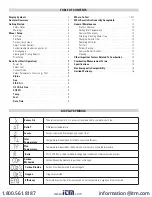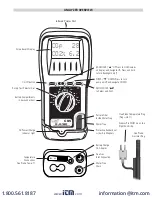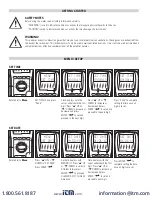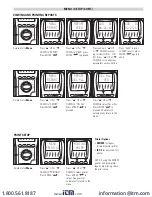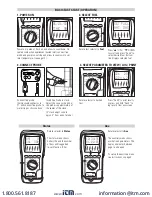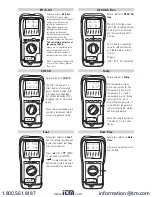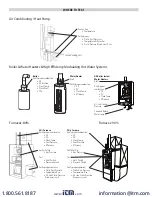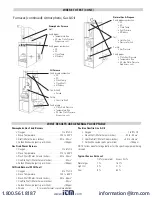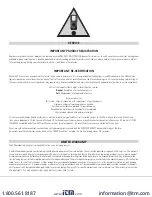
13
REPLACING THE BATTERIES
POST TEST
PERIODIC SERVICE
ANNUAL RE-CERTIFICATION
CLEANING
This meter has been designed for use with both alkaline and rechargeable Nickel Metal Hydride (NiMH) batteries . No other types are
recommended . The analyzer is supplied with 4 “AA” size alkaline batteries . These should be installed into the instrument as shown in the diagram
indicated on the back of the unit .
CAUTION!
Take great care when installing the batteries to observe correct polarity .
Always check the meter for operation immediately after installing
new batteries .
Using Re-Chargeable Batteries
The battery charger must only be used when NiMH batteries are fitted . Alkaline batteries are not re-chargeable . Attempting to recharge alkaline
batteries may result in damage to the product and may create a fire risk .
Battery Charging
Ensure that you use the correct charger . This unit uses a 9V DC regulated charger . Ensure that the batteries are fitted in the correct manner, and
then charge for at least 16 hours . Subsequent charges should be overnight . NiMH batteries may be charged at any time, even for short periods
to conduct testing .
WARNING!
Under NO circumstance should you expose batteries to extreme heat or fire as they may explode and cause injury . Always
dispose of old batteries promptly in a manner consistent with local disposal regulations .
WARNING!
Repair and service of this instrument is to be performed by qualified personnel only . Improper repair or service could result in
physical degradation of the instrument . This could alter the protection from personal injury this meter provides to the operator .
Perform only those maintenance tasks that you are qualified to do .
Remove the probe from the flue and allow the analyzer to purge
with fresh air until readings return to zero . - O2 to 20 .9%, CO to
Zero (Be careful as the probe tip will be HOT)
C85
L O N G L I F E E O S A N A L Y Z E R
CO
2
CO TEMP
Menu
Status
Aux
Eff
X-Air
O2
CO Air
Free
CO
2
CO
Temp
Fuel
Date
Time
O2% 20.9
COa -0>-
Drain water trap by unplugging
the drain plug and shake to
get excess water out .
Check particle filter for dirt
and any other sediment and
replace if necessary .
While the CO sensor has an expected life of more than five years in normal use it is recommended that the analyzer is re-certified at least annually .
This is so that long-term drift on the sensor and electronics can be eliminated . Local regulations may require more frequent re-calibration and
users should check with appropriate authorities to ensure they comply with relevant guidelines .
Periodically clean your instruments case using a damp cloth . DO NOT use abrasive, flammable liquids, cleaning solvents, or strong detergents as
they may damage the finish, impair safety, or effect the reliability of the structural components .
www.
.com
information@itm.com
1.800.561.8187


